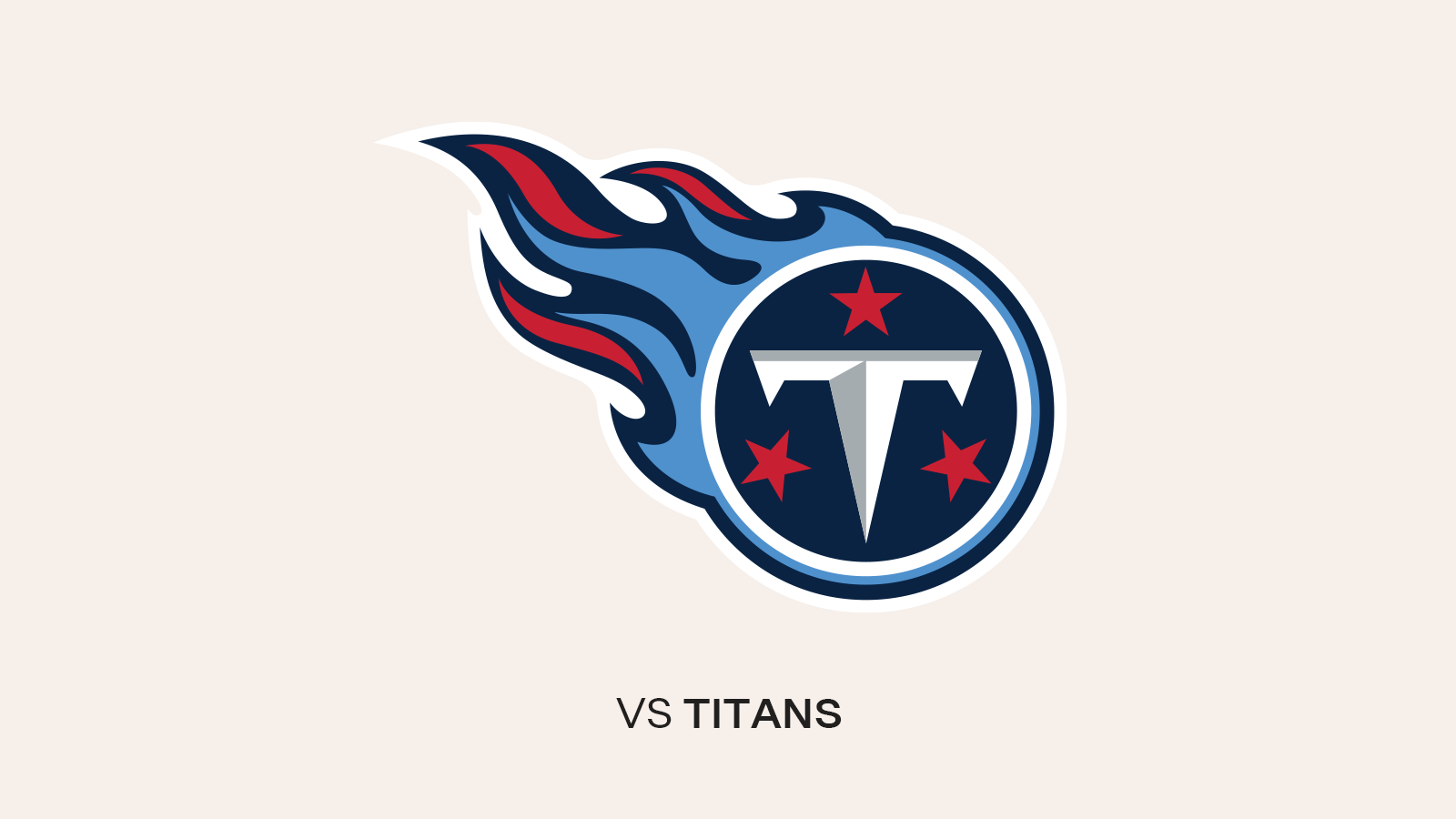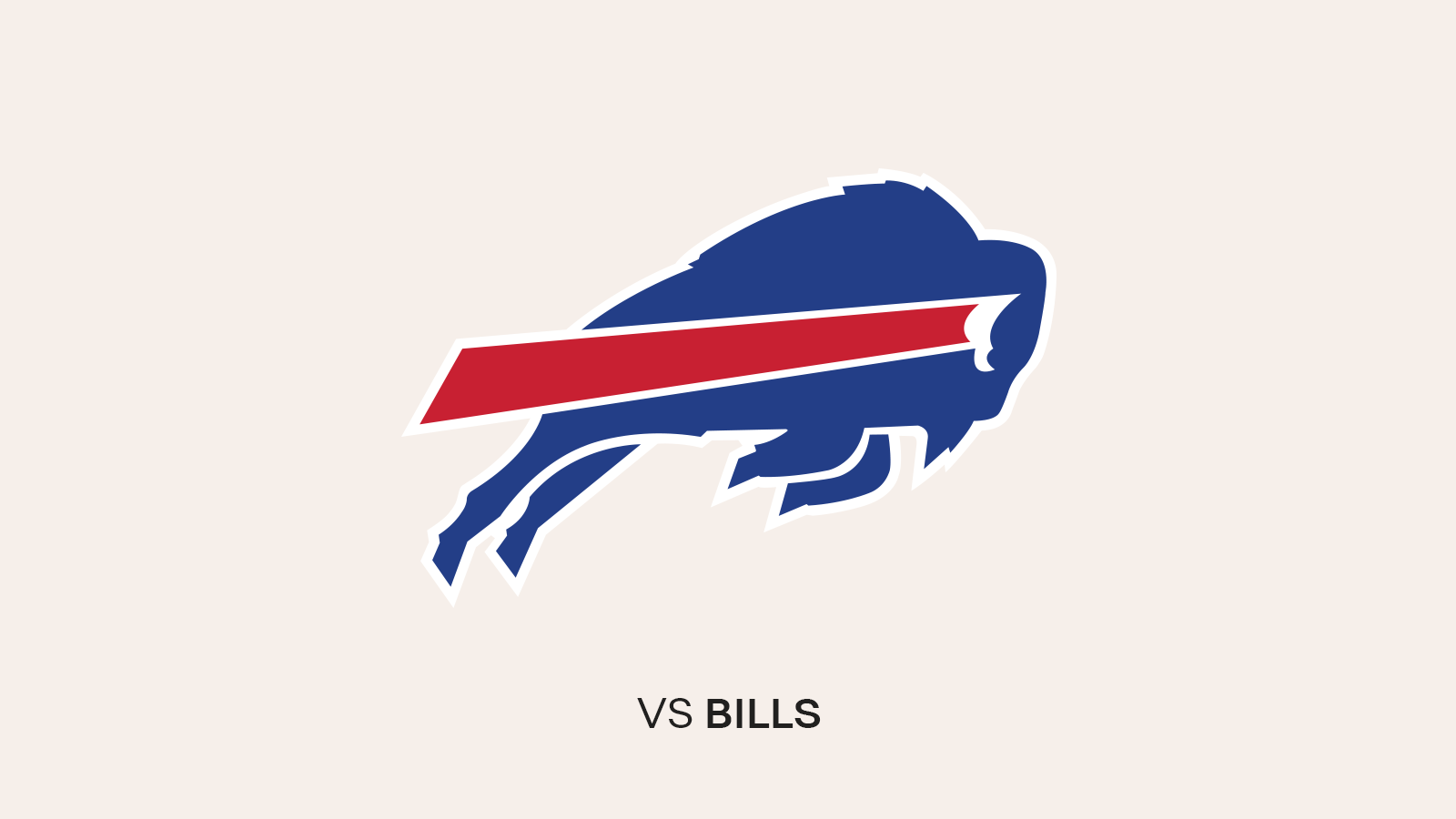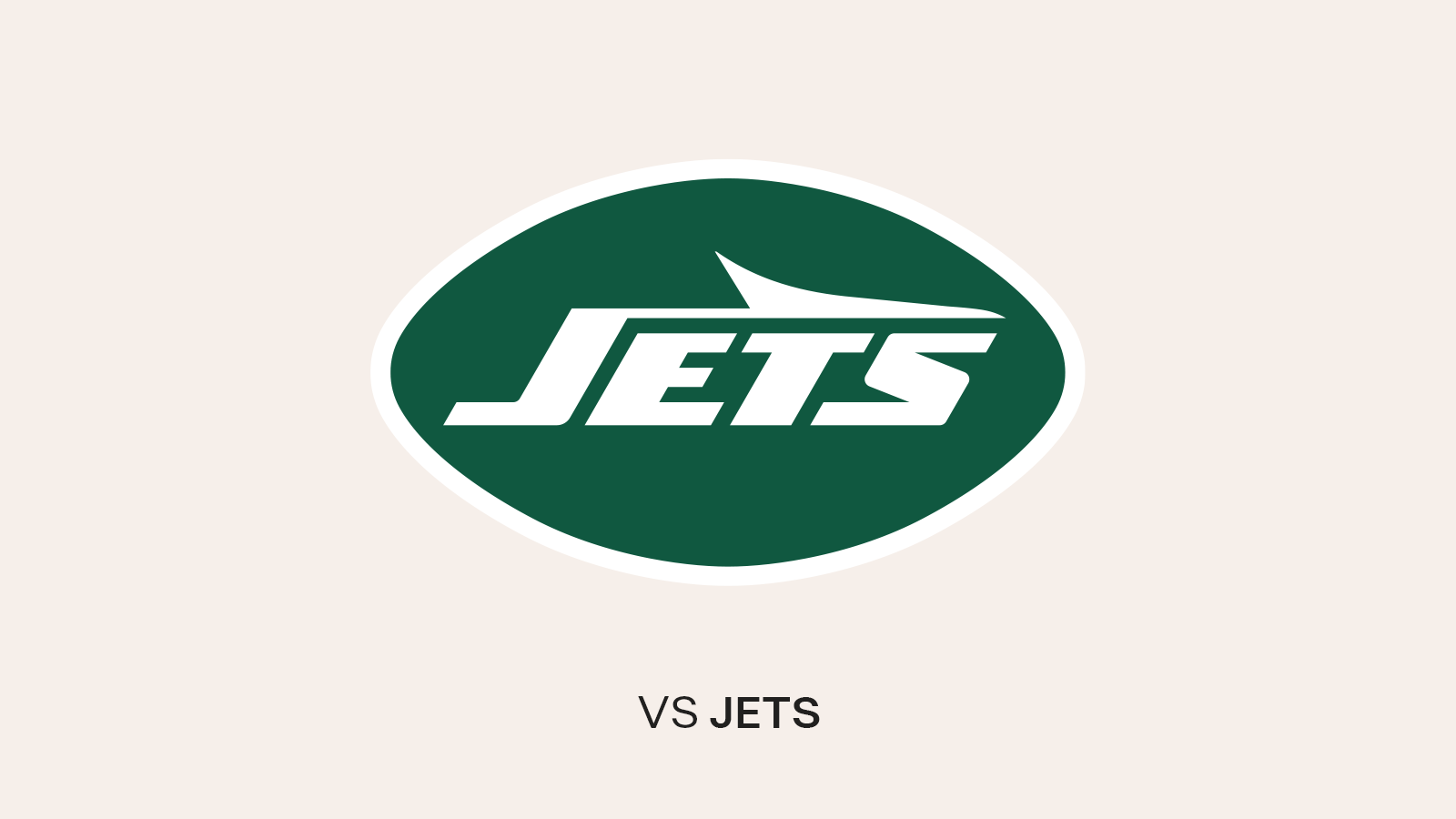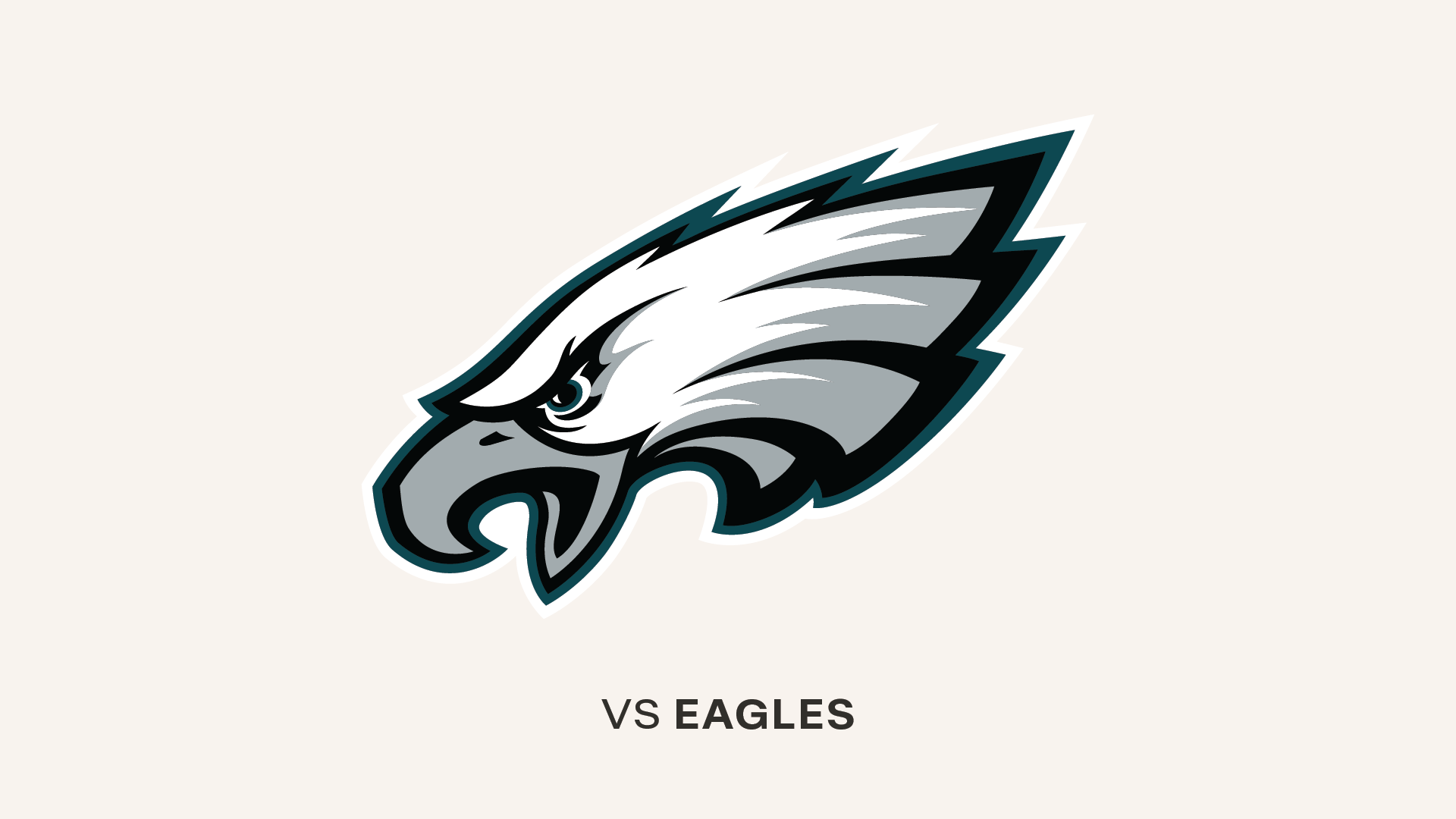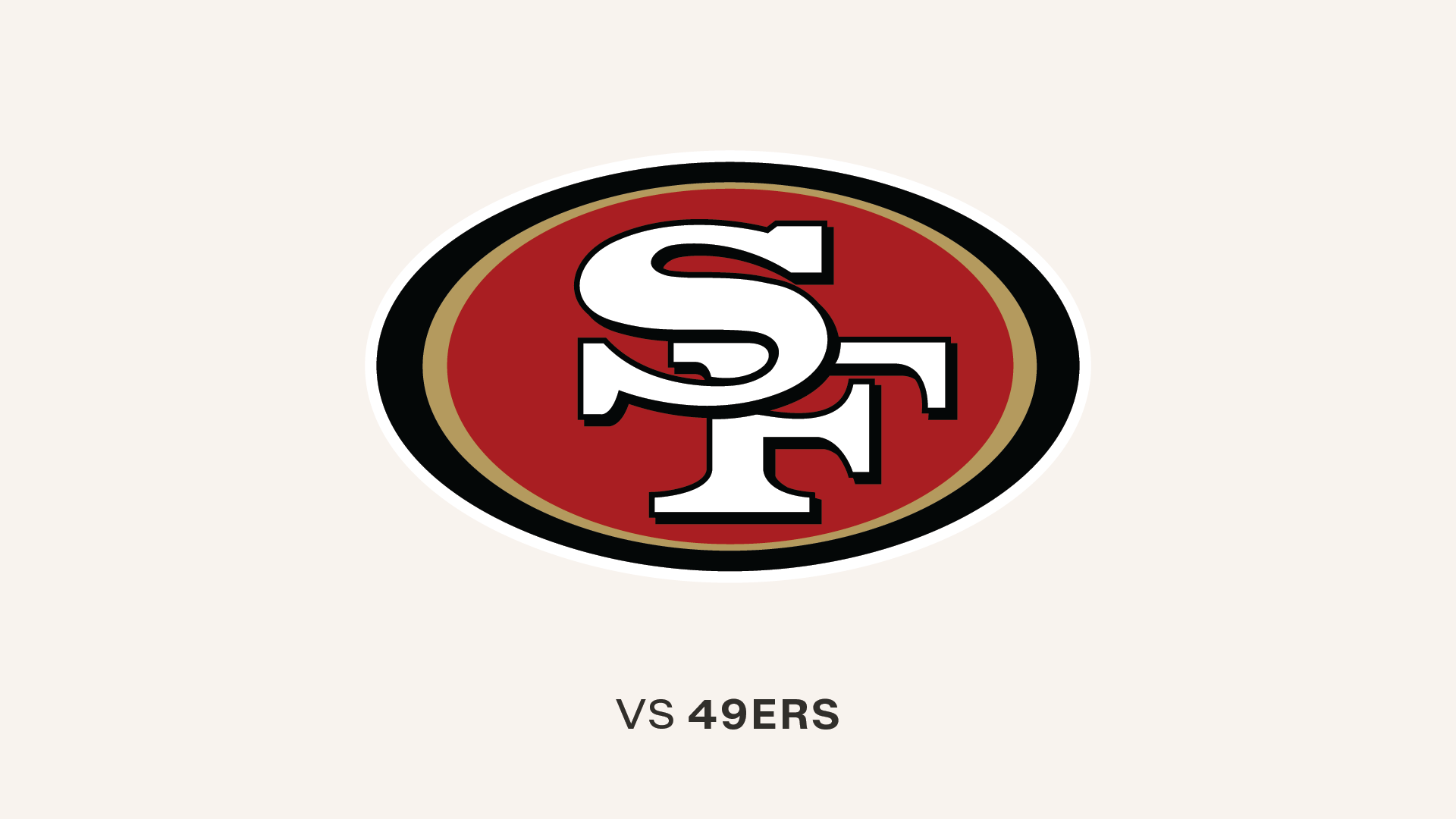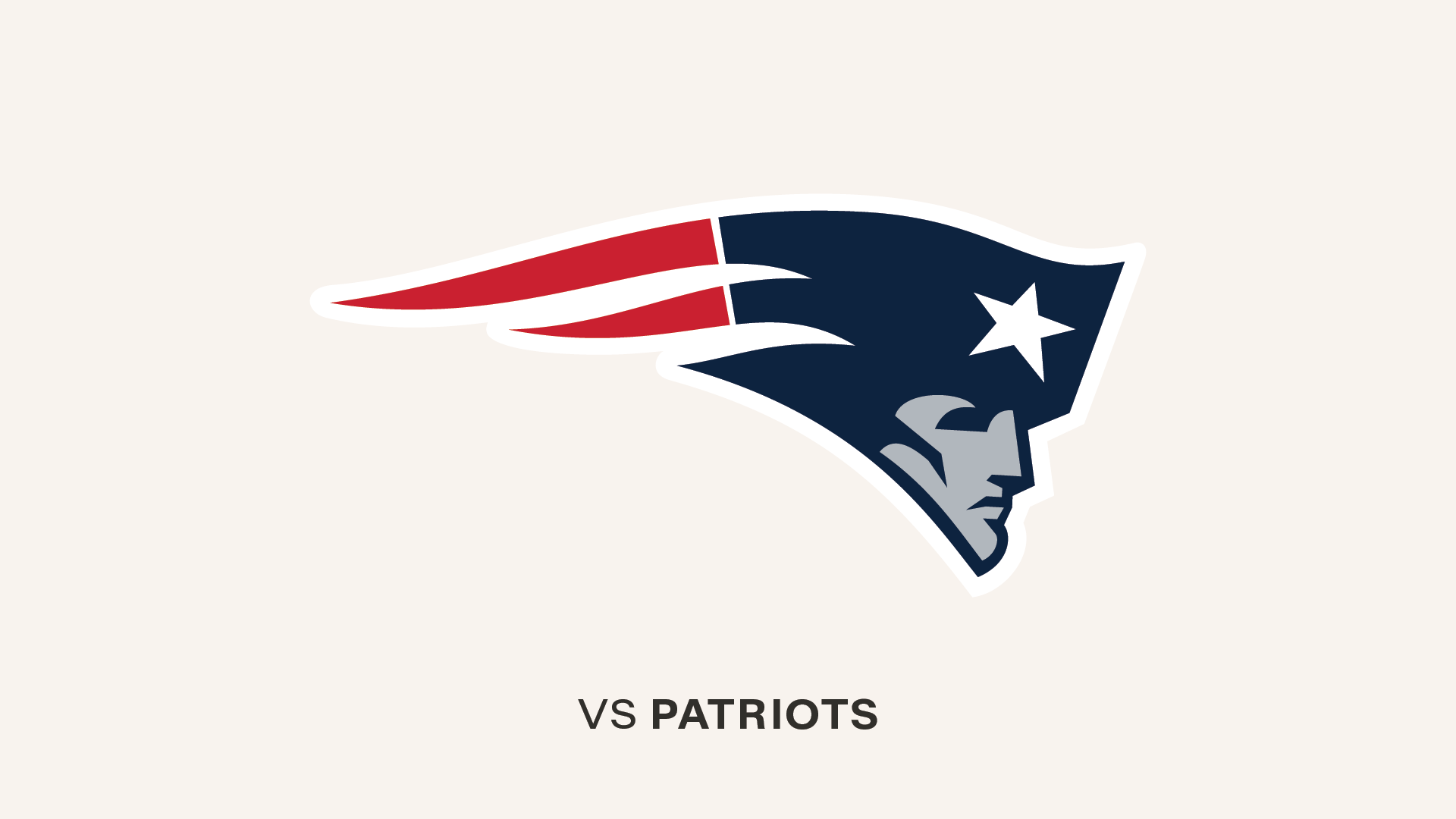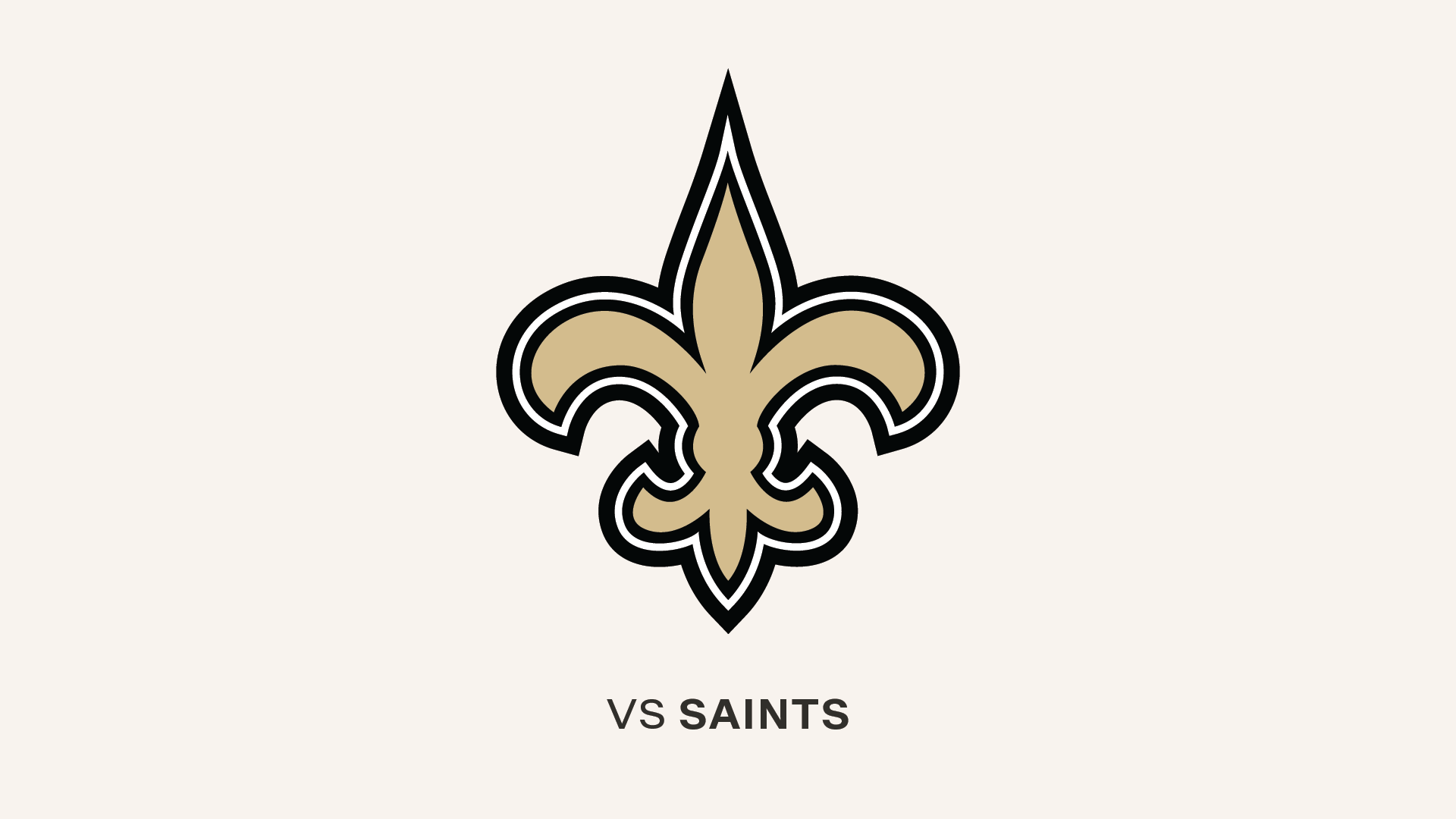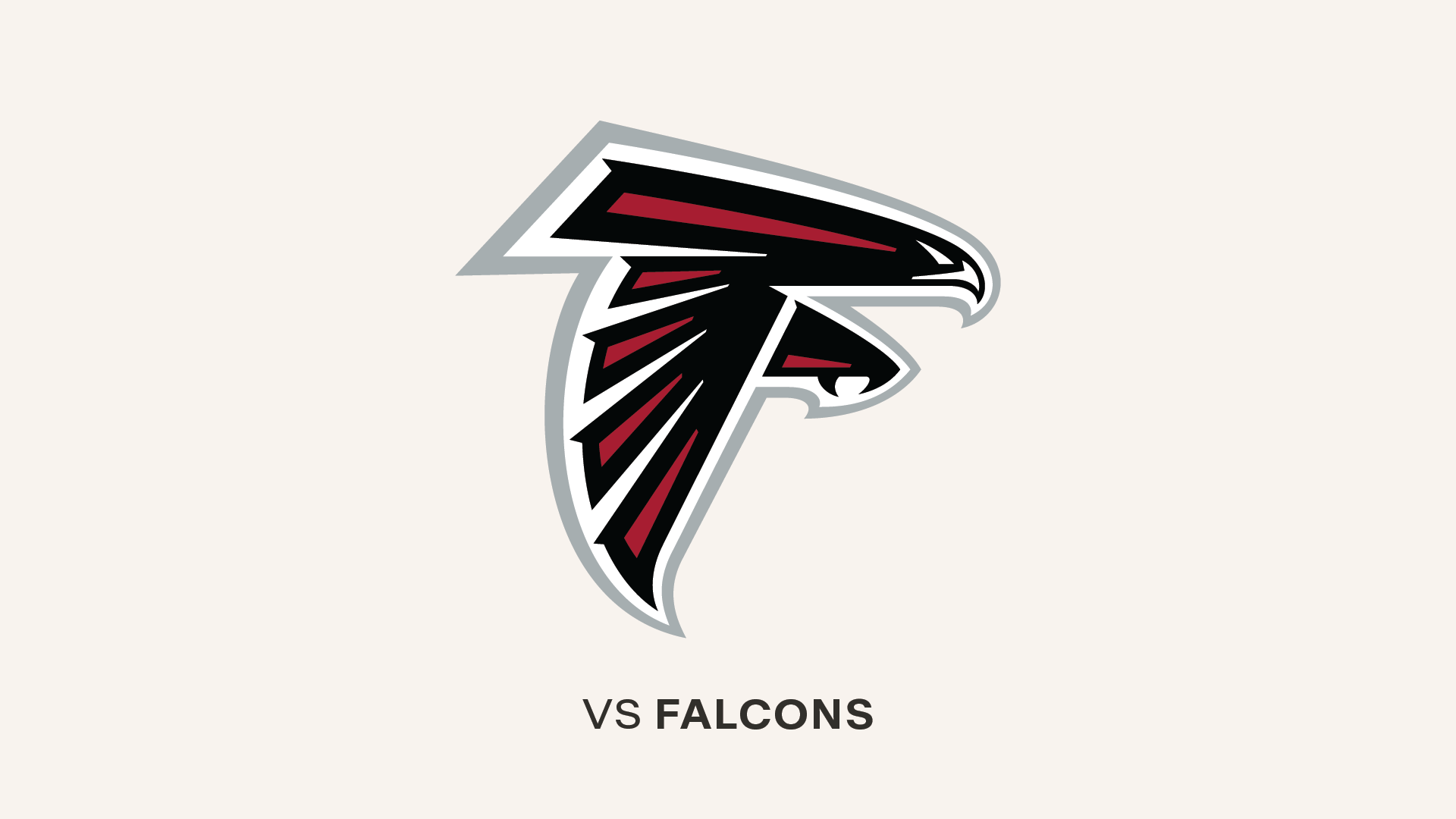Ever tune in to your favorite sitcom in the middle of the fall season, expecting a brand new show, only to discover, with mounting dread, that you were watching one of those "Flashback" episodes?
You know what I mean. You get two minutes of all the characters sitting around together, telling stories that inevitably begin with, "Remember that time…," a Wayne's World-like wavy screen to simulate passage back in time, and then a recycled scene from an earlier episode. That's how the whole 30 minutes goes, one wavy screen and one flashback after another. Nothing really new.
Have you figured out where I'm headed with this? Yeah, I'm about to do the wavy screen thing.
First, a quick introduction for anyone out there reading this not familiar with my long-running column here on Buccaneers.com. My name is the Answer Man and that's my picture up there. Yes, I can fly apparently, though it doesn't really help much with this job. My job is dropping knowledge on fans who send in questions about the Buccaneers or the NFL in general to my mailbag. You can ask me about aspects of franchise history or the current; you can try to stump me with a statistical query; you can even quiz me about general league matters. I'll probably know the answer, and if I don't, I'll find someone who does. Before you bother, I don't answer questions asking me my opinions on the abilities of players, coaches or anyone associated with the team, and I neither have the answer as to who the Bucs are going to draft nor would be included to tell you if I did.
So this is as good a place as any for the main purpose of this column: To fill up the mailbag again and get another series started. Click here to go to the question-submission page. I'll give it a week or two to get a good group of queries, then I'll start banging out bi-weekly columns. Should be fun. It has been in the past.
I've been working for the Buccaneers for a long, long time, pretty much doing whatever job they would give me, but it wasn't until the summer of 2004, right at the beginning of training camp that I got a chance to share my question-conquering power with the public at large. Here's my first column – not great, but I was just getting started. Hard-hitting questions on Casey Cramer, direct snaps and roster moves; the world wasn't exactly moved.
But it was enough to persuade the Buccaneers.com editors to give me a (at the time) weekly gig, and over the months and years that followed my little contribution swelled in size, sometimes logging in at close to 10,000 words. This wasn't really due to my genius – it was you, the Buc fans, sending in an endless stream of great questions. Click here to visit my full archive of Q&As.
With the exception of a mysterious break of roughly three years between 2007 and 2010 (which I've chosen not to explain, as every superhero needs dark corners to explore in later installments), I've been doing this ever since that 2004 debut. (You'll notice if you go to any of these columns that I've changed my look pretty radically from time to time, too.) I still have other duties here at One Buc Place, so it has become apparent that it doesn't work to run the column during the football season, and that's why you haven't seen me for awhile. From January through July, however, I'm your man.
So what I'm saying is, I'm back. Let's get this thing started again.
As for this very special episode of Alex P. Keaton flashbacks, what follows is a randomly-collected assortment of questions I've answered in the past, to give you an idea of the types of discussions that really get this whole thing flowing. Before anyone writes in, YES, some of the information in these Q&As is a bit outdated (or more than a bit in some cases) but I'm going to present them as they appeared at the time. If you are new to the whole Answer Man thing, you might even find these as interesting and informative as (I hope) they were at the time of original publication.
Here comes the wavy screen!
**
One of the best ways to get me going is to ask for some research regarding players or teams from the Bucs' rich, 36-year history. That's what Chris M. did in this first excerpt, which actually just ran this past summer so is still factually on point.
From Series 7, Volume 9:
Chris M. of Tampa Bay asks:
Answer Man, I was curious the other day at a question that I figured you would have an easier time answering for me. How many players have the Buccaneers drafted that have been on a team that has won a Super Bowl and which teams did they win them with? Thank you in advance. I love reading your columns.
Answer Man: Well, that's very nice, Chris. Thank you. I have to say, though, that your hometown entry is a little vague, unless you mean you actually live on a houseboat in the bay. C'mon, readers! I want to know if you're from Tampa or Dunedin or Riverview or Clearwater or whatever!
/pointless rant
Alright, Chris, I have researched your answer, but I wouldn't say it was easy. Just to make sure I was thorough, I found a way to create a list of every player who has ever appeared in a Super Bowl, and then I cross-referenced it with our 35-year list of Buccaneer draft picks. Kinda tedious, to be honest with you.
But worth it, because the answer is pretty interesting (to me, at least, and probably to Chris). First the raw numbers: The Buccaneers have drafted 42 players who have gone on to play in a Super Bowl. Obviously, a good number of those were players the Bucs drafted who were on Tampa Bay's Super Bowl XXXVII-winning squad…specifically, 18 of them (which, when I think about it, is actually a pretty small percentage of the 53-man roster for that game.
And, actually, I should say 45-man roster, because that's what we're really talking about here. This is about men who actually played in a Super Bowl, not ones who were on the roster or injured reserve or the practice squad. That's just how we're defining it here. So, therefore, a guy like Dan Goodspeed, who was on the Bucs' roster for SBXXXVII but was inactive for the game does not count, but DeVone Claybrooks, who did play in the game does count.
One other note: I DID choose to include quarterback Steve Young, who was picked by the Buccaneers in the 1984 USFL dispersal draft.
However, what you specifically asked me was guys we drafted who have won a Super Bowl. That number is 30, which includes the 18 aforementioned winners with the Buccaneers. In case you were wondering, those 18 players were S John Lynch (1993); DT Warren Sapp and LB Derrick Brooks (1995); FB Mike Alstott (1996); CB Ronde Barber and LB Alshermond Singleton (1997); CB Brian Kelly and C Todd Washington (1998); K Martin Gramatica and S Dexter Jackson (1999); G Cosey Coleman and LB Nate Webster (2000); T Kenyatta Walker, CB Dwight Smith, S John Howell, FB Jameel Cook and DE Ellis Wyms (2001); and S Jermaine Phillips (2002).
Here are the other 12, in chronological order of when they were drafted by Tampa Bay:
- S/CB Curtis Jordan – drafted by Tampa Bay in the sixth round in 1976, played five years for the Buccaneers and later was a reserve for the Washington team that won SBXVII after the 1982 season.
- T Charley Hannah – drafted by the Bucs as a defensive end in the third round in 1977, converted to offensive tackle while still in Tampa, then went to Oakland and started at left guard for the team that won SBXVIII after the 1983 season. That was the first Super Bowl played in Tampa, by the way.
- RB Johnny Davis – drafted by Tampa Bay in the second round in 1978, jumped to San Francisco for just one season in 1981 before moving on to Cleveland and landed with the 49ers at the right time, playing on the team that won SBXVI after the 1981 season.
- QB Doug Williams – drafted by Tampa Bay in the first round in 1978, spent five seasons in Tampa, then went to Washington (after a stint in the USFL) and, after serving as the backup for most of the 1987 season, started in SBXXII and led the Redskins to a lopsided win over Denver.
- QB Steve Young - drafted by the Bucs in the first round of the USFL draft in 1984, played two seasons in Tampa before being traded to San Francisco and was the starting quarterback for the 49ers' wins in SBXXIV and SBXXIX after the 1989 and 1994 seasons, respectively.
- T Harry Swayne – like Hannah, was drafted as a DE by the Bucs, in 1987, before converting to the offensive line; played four seasons with Tampa and then began a very fortuitous tour of the league that landed him as a starter on three different Super Bowl teams; lost his first Super Bowl with San Diego after the 1994 season but then won SBXXXIII with Denver after the 1998 season and SBXXXV with Baltimore after the 2000 season.
- DE Rhett Hall – drafted by Tampa Bay in the sixth round in 1991, played three seasons for the Bucs and then spent one year in San Francisco, where he was a reserve for the team that won SBXXIX after the 1994 season.
- DT Santana Dotson – drafted by Tampa Bay in the sixth round in 1992, played four seasons with the Bucs and then hopped as a free agent to Green Bay in 1996, where he was a part of the Packers' winning squad in SBXXXI after the 1997 campaign, starting at right defensive tackle.
- P Klaus Wilmsmeyer – drafted by the Bucs in the 12th round in 1992 (the last year the draft had that many rounds), did not make Tampa Bay's roster but did end up in San Francisco for the next four years and won SBXXIX with the 49ers after the 1994 season.
- QB Trent Dilfer – drafted by Tampa Bay in the first round 1994, played six seasons with the Bucs, mostly as a starter, then jumped to Baltimore just in time to start for the team that would win SBXXXV (in Tampa) after the 2000 season.
- DT Anthony McFarland – drafted by the Bucs in the first round of the 1999 draft and was with the team for the 2002 Super Bowl year but was on injured reserve for the playoff run; eventually traded to Indianapolis, where he started for the Colts team that won SBXLI after the 2006 season.
- G Russ Hochstein – drafted by Tampa Bay in the fifth round in 2001 but only briefly appeared on the Bucs' roster before moving to New England and beginning a long career as, mostly, a reserve; played in three Super Bowls for the Patriots, winning SBXXXVIII and SBXXXIX after the 2003 and 2004 seasons.
In case you were wondering, here are the 12 guys drafted by Tampa Bay who were on the losing end of Super Bowls with other teams. Each player's name is listed with the round and year he was drafted by the Buccaneers, the Super Bowl(s) he played in and the team he played for in that (those) game(s):
- CB Jeremiah Castille (3rd round, 1983; XXII, Denver)
- S Mike Prior (7th round, 1985; XXXII, Green Bay)
- DE Ron Holmes (1st round, 1985; XXIV, Denver)
- RB Don Smith (2nd round, 1987; XXV, Buffalo)
- DT Reuben Davis (9th round, 1988; XXIX, San Diego)
- P Chris Mohr (6th round, 1989; XXVI, XXVII, XXVIII, Buffalo)
- DT Mark Wheeler (3rd round, 1992; XXXI, New England)
- DT Chidi Ahanotu (6th round, 1993; XXXVI, St. Louis)
- DE Regan Upshaw (1st round, 1996; XXXVII, Oakland)
- G Frank Middleton (3rd round, 1997; XXXVII, Oakland)
- DE Joe Tafoya (7th round, 2001; XL, Seattle)
- S Will Allen (4th round, 2004; XLV, Pittsburgh)
Well, it looks like I've completely satisfied the parameters of your question by this point, but I can't help adding a few items of interest in these lists.
For instance, isn't it amazing how many players drafted by Tampa Bay took part in Super Bowl XXIX between San Francisco and San Diego at the end of the 1994 season. The winning 49er team featured three former Buc draftees, while the losing Charger group had two more.
I also find it interesting that the two defensive tackles the Buccaneers drafted and immediately inserted into their lineup in 1992 – Mark Wheeler and Santana Dotson – ended up opposing each other in Super Bowl XXXI five years later. In fact, Wheeler and Dotson are both listed as the starters at right defensive tackle in that game for their respective teams, New England and Green Bay.
Former Bucs Doug Williams and Jeremiah Castille also squared off in Super Bowl XXII, and while Williams was the game MVP with his four touchdown passes and 340 yards, Castille did manage to snare the only interception of the game off the Redskin passer.
You'll notice that each of the Buccaneers' first three college drafts produced at least one player who would later play in (and win) a Super Bowl. However, after that they went four years before drafting another player who would make the big game (Jeremiah Castille in 1983) and five before drafting one who would eventually win a Lombardi Trophy (Steve Young in the 1984 USFL draft). If you don't count that USFL draft, then it wasn't until 1987 (Harry Swayne) that a Buc draft produced another Super Bowl winner.
Both McFarland and Hochstein were fortunate to get another chance elsewhere after several of their fellow draftees made it into Super Bowl XXXVII with the Buccaneers. McFarland, of course, got a ring with Tampa Bay but didn't actually get to play in a Super Bowl until his one season with the Colts. Hochstein was the only one of the first six players drafted by the Bucs in 2001 not to play in SBXXXVII with Tampa Bay, but he more than made up for that with his three-SB run in New England.
S Will Allen, a fourth-round pick in 2004, is the only player drafted by Tampa Bay since its own Super Bowl win after the 2002 season to have made it into a subsequent Super Bowl. So far!
Note also that three former Buccaneers later went on to play in a Super Bowl that was staged back in the home stadium of their original team: Charley Hannah, Don Smith and Trent Dilfer. Two others ended up playing against Tampa Bay in Super Bowl XXXVII as members of the Oakland Raiders: Regan Upshaw and Frank Middleton.
**
Okay, history lessons are cool but this is probably my favorite category of questions: Statistical analysis. Just last year I looked at the history of teams that made single-season improvements of seven wins or more; the success of position double-ups in the NFL draft; the preponderance of first, second and third-round picks on Super Bowl rosters, and so on.
Here's one from Series 4, Volume 1, back in 2006, that I still find interesting, even though it was very specific to that year's team:
BuccanBobby of San Francisco, California asks:
Dear Answer Man...you've got me in 3rd and long (odds that you'll continue to ignore my question regarding the Bucs D for a 3rd time). Question: If you break down 3rd and long into (2) categories: 3rd & 4-9 yards needed for a 1st and 3rd & >10 yards needed for a 1st, where does the Bucs D rank (versus div-conf-league-you pick) in term of % of 1st downs given up when it's 3rd and > 10? It seems that they give up in inordinate number of 1st downs in that situation. What do the stats say? My guess is bottom 3rd of league. Also, since I lost the bet to my wife (that you would actually attempt to answer my 3rd & long question on try #2), I promised to ask this "fashion related" question for her: It seems that every aspect of the players' uniform comes in a variety of sizes, except their socks. They're all one size...too long! She says that the socks are all one size, I say there are (2) sizes, long & longer? What's up with the socks? Super Bowl next year!!! Thanks.
Answer Man: Well, BuccanBobby, if that is your real name, I almost skipped this one on principle. I mean, does it seem like an effective strategy on your part to get a question answered by haranguing me over a couple of previously missed e-mails? Are you trying to make me look bad? I guess 8,000-10,000 words every week isn't enough for you if your question isn't in there somewhere.
And I didn't neglect to "attempt" it in recent weeks, I just didn't pull it out of my bulging e-mail bag. I don't "attempt;" I "answer," and I simply didn't answer your previous e-mails. Sue me.
Still, you've hooked me with the statistics-based question (I love those) and you seem to have remained fairly good-natured about the whole thing, so I'll throw you a bone. Plus, if you nag your wife at all like you nag me, then I feel sorry for that fine woman and I want to help out with her question.
Yours first. You know, the Buccaneers' public relations department actually breaks down the team's statistics into about 30 extra pages not provided by the league, such as situational records (example: The Bucs were 9-0 when leading after three quarters in 2005), goal-to-go production (example: The Bucs scored 14 touchdowns and two field goals on the 18 drives on which they reached a first-and-goal in 2005) and length-of-drive information (example: The Bucs scored one touchdown and two field goals off the 19 drives that started inside their own 10).
Two of those breakdown pages concern third downs, with success rates determined in specific situations, such as first half versus second half. One of those sheets breaks it down by yards, so I can easily give you the Bucs' numbers and their opponents' numbers in the breakdowns you prescribe.
(A clarification: You broke it in two categories, for now setting aside the "short" third downs of 1-3 yards. That's fine. But your two categories were 4-9 yards and >10 yards (greater than 10 yards). That leaves out third downs of exactly 10 yards. Since the Bucs' breakdown sheet has categories of 1-3, 4-6, 7-10, 11-20 and 21-plus, I'm going to initially put the exactly-10-yard scenario in with your first group. So the split is 4-10 and greater-than-10.)
In 2005, the Buccaneers' defense allowed 49 of 136 third downs in the 4-10 range to be converted, for a "success" rate by the opposition of 36.0%. The Bucs' defense allowed four of 34 third downs in the 11-and-up range to be converted, for a success rate of 11.8%.
At the same time, Tampa Bay's offense converted 45 of 121 in the 4-9 range and five of 46 in the 11-and-up range. Those are success rates of 37.2% and 10.8%
Now, those numbers look pretty close to me. There wasn't an appreciable difference between how the Bucs' defense fared in those two situations and how opposing defenses fared. That's a start towards answering your question, Bobby, but it admittedly still has a few flaws.
First, I think you really intended to included third-and-10s with the longer group, whereas I have them here with the shorter group. If a lot of the defensive failures in the 4-10 group were on exactly third-and-10, then the above numbers would be misleading in answering your question. So I guess I better dig a little more and find all the third-and-10s, so that we may switch them into the longer group.
Okay, done. On exactly third-and-10, the Bucs' defense allowed six conversions in 16 attempts. Now, that does add a little credence to your theory, Bobby. That's a 37.5% success rate by the opposition, which is a bit high considering the Bucs allowed a 35.0% conversion rate overall. But, still, that's a relatively small difference, and on all third downs of 10 or more yards the Bucs' defense allowed nine conversions in 50 tries, a success rate of 18.0%.
Second, you wanted those numbers compared to all the defenses in the league, not compared against the Bucs' offensive success against the defenses they played in 2005. Well, I tracked that down, too.
You predicted that we would be in the bottom third on that list, right?
Wrong.
The Bucs' 18.0% rate of allowing conversions on third downs of 10 or more yards in 2005 ranked – drum roll, please – 13th in the NFL. Thirteenth. Not only is that not bottom third, it's not even bottom half. Furthermore, the Bucs were closer to moving into the top third than falling into the bottom third. What I mean by that is, if you subtracted, say, three percentage points from that 18.0%, the Bucs would jump all the way to ninth, but if you added three percentage points, the Bucs would fall only to 19th.
I don't know if I'm totally disproving your core theory, Bobby, but it doesn't seem to me as if these numbers show anything drastic about the Buccaneers' third-down efficiency in longer-yardage situations in 2005. If I can be so bold, I would suggest that you might be falling victim to a cognitive distortion known as confirmation bias.
Confirmation bias, in a technical line I'm stealing from Wikipedia, "is a phenomenon wherein decision-makers have been shown to actively seek out and assign more weight to evidence that confirms their hypothesis, and ignore or under-weigh evidence that could disconfirm their hypothesis."
In plainer English, what I'm saying is that you are probably remembering very clearly every third-and-long that the Bucs' defense gave up and unconsciously dismissing all the times the Bucs' defense stifled the opposition in that situation.
Let me be clear that I'm not insulting you. Everyone experiences this. I'll give you an example.
During the 2005 season, the Answer Man became convinced that the Buccaneers' offense always ran the ball when it was second-and-10. Always. I would watch a game with friends and when a second-and-10 came up I would pontificate to those around me, "Watch, it will be a run." And it almost always was.
At least, that's what my perception told me. Well, I tested that theory the other day.
The Buccaneers' video department can quickly break down any number of scenarios, using their software to filter all the plays of a given season into categories. So we looked at every Buccaneer offensive second-and-10 in 2005 and sorted them into runs and passes. As the video pro held his finger above the enter button to perform the sort and reveal the numbers, I predicted it would be a run on 75% of the plays.
Well, a moment later, I was stunned. While I'm not comfortable revealing some specific self-scouting info like our run-pass tendencies in certain situations, I can tell you on a general basis that I was off by quite a bit. I could hardly have been more wrong.
Clearly, I had fallen victim to the confirmation bias (and, I guess, the disconfirmation bias, too, wherein a person uncritically accepts information that supports his theory and very critically scrutinizes information that does not.) It happens. But, hey, why let the facts get in the way of a really strong feeling?
Well, that was fun. I'm glad you were persistent with your e-mails, Bobby. On to the next…
Oh, wait, your wife's question. Can't leave that out.
Okay, so on this bet you've got two sizes and your wife has one, right?
You're both wrong, which means I win. Buccaneers Equipment Manager Tim Sain makes five different sizes of socks available to the players for their game day uniforms. They may have numerical size designations, but he categorizes them thusly, from smallest to largest: receiver, running back, linebacker, lineman and monster.
What's my prize?
**
Now, there's another category of question that usually sends me into a series of sighs and groans, but secretly, I kind of like them. Long-time readers know what I'm talking about: Anything that sends me into the NFL Rulebook.
This is a very dry publication, and finding the applicable passages to any given question can be a chore, but the eventual answer is usually pretty interesting, so I don't really mind.
Here's an example from Series 6, Volume 3:
Chris from Apopka, Florida asks:
Hey Answer Man, I know that you can return a [missed] field goal. However I was wondering, if a team was attempting a long field goal could a player from the other team stand under the crossbar and if the ball came near the crossbar jump up and swat the ball? I know that would take some serious skill on the player's part but would it be a legit field goal block?
Answer Man: Chris, I have to admit that this is the second time in three columns that the NFL Rulebook has nearly thwarted me.
Here's the process by which I got around to the correct answer, which was there very plainly on page 88 of the Rulebook all along: 1) Vaguely remembered having researched this before and discovering that such a block is illegal; 2) Pored through the Rulebook for, oh, 853 hours without finding any support for what I had remembered (stupid me...I was looking in the field goal and scoring areas of the book); 3) Did a little surfing to see if I could find an official NFL answer; 4) Found many links to the NCAA having changed that rule fairly recently, but nothing officially NFL-related; 5) Found other links in which the authors very confidently answered the question, despite the fact that some said the move was legal and others said it was illegal; 5) Said to myself, "Answer Man, this is dumb. You're a 20-second walk from the office of Rich Bisaccia, the Bucs' special teams guru;" 6) Got off my butt and walked to Bisaccia's office to ask this question, to which he promptly answered, "No, that's called goal-tending and it's illegal;" 7) After listening to a more detailed explanation from a very patient Bisaccia, walked back to my office, picked the Rulebook back up and looked for "goal-tending" in the Index.
And, bingo! The answer is Rule 12, Section 3, Article 1 (s). It is part of a long list of items considered "Unsportsmanlike Conduct" (that's what Rule 12, Section 3 covers). Rule 12 begins like this:
There shall be no unsportsmanlike conduct. This applies to any act which is contrary to the generally understood principles of sportsmanship. Such acts specifically include, among others:
And then part (s) reads:
Goal-tending by a defensive player leaping up to deflect a kick as it passes above the crossbar of a goalpost is prohibited. The Referee could award three points for a palpably unfair act.
By the way, a "palpably unfair act" is Rule 12, Section 3, Article 3, and it simply reads:
A player or substitute shall not interfere with play by any act which is palpably unfair.
It goes on to say that the Referee can do such things as disqualify the player who commits the act, enforce any distance penalty they believe is equitable and even award a score. Here's an obvious example: If a player is running free down the sideline with the ball, obviously on his way to scoring, and a player on the sideline trips him, that would be a palpably unfair act and the Referee could award the touchdown anyway.
Now, as you mentioned, Chris, it is legal for a player to wait in the end zone and, if the kick falls short of the crossbar, catch it and return it. The Bears certainly have made the most of that strategy, as Nathan Vasher returned one 108 yards for a score in 2005 and Devin Hester did the exact same thing a season later. San Diego's Antonio Cromartie one-upped the Bears in 2007 when he scored on a 109-yard return of a missed field goal against the Vikings. Yes, that was the record for longest NFL TD ever, and one that can be matched but never exceeded.
For strategic reasons, you normally see this play attempted near the end of a half. A field goal that's likely to have the right trajectory to fall short in the end zone is going to be from pretty far out. Let's say it's a 55-yard try, which means it's being kicked from the 45. If you choose to catch the miss and run it out, you've got to get to at least the 45 to make it a good decision, and that's pretty risky. On the other hand, if the half is going to end anyway, why not try? That's what Cromartie did, and it sure paid off.
I imagine you see a gray area there, right? If you can catch a miss and return it, couldn't you jump up and catch a kick that might be about to go over the crossbar? Well, first of all, that would be highly unlikely; for one thing, the player would have to catch the ball about 12 feet off the ground in order to nab one that was going to just go over the crossbar. If that happened, it would be up to the referee to determine if it was a palpably unfair act or not. You definitely could not catch and return a kick that had already broken the plane of the crossbar. Once the ball has broken the plane, the kick is already good. Coach Bisaccia points out that kick by the Cleveland Browns a few years ago where the ball struck the camera that was mounted on the supporting post where it curves up to meet the crossbar, just behind the crossbar. The ball deflected back out into the end zone and initially looked like a miss, but the officials watched a replay and determined that by striking the camera it had already broken the plane and was therefore good.
**
Like I said, I'm willing to take on questions that pertain to the league as a whole, too, and even to look into the NFL's nearly 100-year history.
Here's an example where I actually took on four questions at once in Series 6, Volume 11:
Sam C. of Newmarket, Ontario asks:
What city had the shortest lifespan holding onto an NFL team? Which is the longest running franchise? Which team has bounced around form city to city the most? Which team has the longest span of years not winning the Super Bowl?
Answer Man: Hey, given what I just explained above, I could just count this as four questions and be done with it, right? Right, Buccaneers.com editors?
Apparently not.
So let's take them one at a time. First: What city had the shortest lifespan holding onto an NFL team?
I'm going to answer this question two ways, because the first way, while accurate, probably wouldn't be that satisfying. You see, in the early days of professional football, teams came and went fairly regularly as the sport tried to catch on with a public that already had baseball entrenched as "America's Game."
Star players like Jim Thorpe helped the game catch on a bit in Ohio in the 1910s (is that how you write that? Should it be nineteen-teens? Whatever) but, as the NFL's wonderful Record & Fact book puts it, "Pro football was in a state of confusion [in 1920] due to three major problems..." Those problems were rising salaries, too much team-to-team movement of players and college players being allowed to play in the pro leagues. Thus, a handful of teams got together in auto showroom in Canton, clarified the rules and created the American Professional Football Conference, which would change its name to the National Football League two years later.
So we begin in 1920 when we're talking about the history of the NFL. There were 14 teams in the league that year, though no official standings were maintained, long-forgotten clubs like the Cleveland Tigers and Columbus Panhandles. There was a great disparity in the talent levels from team to team, and several teams simply disbanded and gave up their franchises after that first year, including the Chicago Tigers and the Detroit Heralds. (Yeah, with crazy names like the Panhandles and the Kardex - the pride of Tonawanda in 1921 - available, you still have two teams in the original league named the Tigers. Real imaginative.) So you could say that Chicago and Detroit were the first two cities to lose a team, after exactly one season.
Of course, that first season also included a team called the Chicago Cardinals, which just happens to be the exact same franchise that is now playing in Arizona (spoiler alert on parts two and three of Sam's question), so it's not like professional football abandoned the Windy City. And the Detroit Tigers started play in 1921, so that city was still in the game, too.
Maybe, then, we should go with the Kardex, who were alternately known as the Lumbermen. According to trusty Wikipedia, both names were a result of the team presumably being sponsored by an office supply company named American Kardex. The Kardex had been playing as what I guess you would call a "semi-pro" team (known as the All-Tonawanda All-Stars) since 1916 and had experienced enough success, including in occasional matchups with teams that were in or would join the NFL. Thus, Tonawanda felt it could hang in the new pro league and joined in 1921, only to be spanked 45-0 by the Rochester Jeffersons and decide, "Uh, maybe not so much." The Kardex folded after one game (Wikipedia says the team also may have had trouble scheduling opponents, but the first story is more fun.)
But I'm guessing you don't find that answer too satisfying, Sam, and that would be reasonable. Franchises were coming and going in the early years, or changing names or merging or seeing their stadiums burned to the ground (those poor Louisville Brecks), so there are a lot of possible short-lived-team answers back then. (And a lot of great names: Evansville Crimson Giants, Dayton Triangles, Bratton Greenhorns, Staten Island Stapletons, Newark Tornadoes, Providence Steam Roller, Cincinnati Celts, Racine Legion...one of those is fake. Can you guess? See the very bottom of this answer.)
So let's take it past those tumultuous early years to say, 1933. That's when the NFL made a bunch of rule changes to separate its style of play from the college game, split into two divisions for the first time and held its first league championship game, won by the Chicago Bears, 23-21, over the New York Giants.
There were 10 teams in the league that season and one of them, the Portsmouth Spartans, had only been in the league since 1931, though it had formed in 1929 and had regularly played non-league games against NFL teams and other well-known independent teams. And done quite well. The Spartans went 11-3 and finished second to the Green Bay Packers in 1931, then finished the 1932 season in a virtual tie with the Bears (Chicago was 6-1-6, Portsmouth 6-1-4 and ties were not used as part of the winning percentage back then). The two teams then played an unscheduled championship game which was included in the regular-season standings, with Chicago winning 9-0. Interest in the game is cited as one of the reasons the league went to an actual championship game the next year.
Alas, the Spartans (6-5 in 1933) were having much more trouble off the field then on, and the next year the team was bought by a Detroit radio executive, moved to that town and renamed the Lions. Yes, those Detroit Lions. So, if you want to start in 1933, Sam, I'd say the first city to lose its team to another city was Portsmouth. In that same 1934 season that the Lions were born, the Cincinnati Reds started the season 0-8, were suspended for defaulting on league payments and had their spot bought out by the St. Louis Gunners. The Gunners went 1-2 down the stretch and were never heard from again. I don't think that's quite the same thing as a team moving to another city, though, so I'm going to stick with the Spartans/Lions.
Alllllllrighty, part two: Which is the longest running franchise?
Again, I'm going to start in 1920, and you'll see in a moment that this is actually an important distinction.
Amazingly, two of the 14 teams that were a part of the NFL in that inaugural 1920 season still exist today, though neither in the same city and only one by the original nickname. We hinted at one of them above: the Cardinals. Those Chicago Cardinals eventually moved to St. Louis in 1960 and then to Phoenix (later adopting "Arizona" as their named home) in 1988. They also had one season in 1944 when, due to player shortages caused by World War II, they merged with the Pittsburgh Steelers and were known as Card-Pitt.
By the way, the Cardinals were actually formed as an amateur team in 1898 and turned pro in 1913, making them the oldest existing professional football club in the U.S.
The other original team still in existence today is the Decatur Staleys, founded by the A.E. Staley food starch company in 1919. George Halas helped run the team in that 1920 season, then bought the club in 1921 and moved it to Chicago. Halas agreed to keep the Staleys nickname for one more year, then renamed his team the Bears in 1922. That obviously makes the Bears the longest-running team in the same location.
However, that last honor is actually a tie, because the Green Bay Packers came into the league in 1921 and never left. So you could call the Packers the longest-running franchise with the same hometown and the same nickname, by one year over the Bears.
Part three: Which team has bounced around form city to city the most?
For this question, we're going to assume you mean, Which of the existing 32 teams in the NFL has the most city-to-city moves in its history. That assumption allows us to skip those aforementioned crazy years.
Well, sort of. See, there's an argument that can be made that today's Indianapolis Colts are descended from the Dayton Triangles, an original 1920 NFL team. The Triangles were sold and moved to Brooklyn in 1930 and became the Dodgers. In 1945, the Dodgers merged with the Boston Yanks, a team that four years later would move to New York and become the Bulldogs, though they would then be called the Yanks from 1950-51. That team was sold to a Texas group in 1952 and renamed the Dallas Texans, a franchise that would fold after a single 1-11 season.
The "remains" of that franchise, as it is worded on Wikipedia, was then awarded to the Baltimore group that formed the Colts (which would move to Indy in 1984).
I don't know, though. The Answer Man ain't buying it. Seems to me the merging with Boston in '45 and the folding-and-remains-selling bizness of 1952 sort of break the link.
What you mainly have in the NFL is a bunch of teams that have stayed put (the Packers, Bears, Buccaneers, etc.) and a bunch of one move teams. Those would include the Colts, the Tennessee Titans (formerly the Houston Oilers), the Kansas City Chiefs (formerly the Dallas Texans...again), the Baltimore Ravens (technically an expansion team in 1996 but born of the original Cleveland Browns) and the St. Louis Rams (originally based in L.A.).
And so we come back to the Cardinals, who have twice bolted for greener pastures, as described above. I suppose you could also include the Oakland Raiders, who have only called two cities home but went from Oakland (1960-81) to Los Angeles (1982-94) and then back to Oakland (1995-present).
You could also move the Rams from that one-move group into this one, depending upon how you look at it. The first Rams team began play in Cleveland in 1936, as a part of the new American Football League, and stayed there through the 1945 season. In 1946, the Rams opened up the West Coast for the NFL (at the time, it was no further west than Chicago) by relocating to L.A and joining the league. However, the Rams franchise were officially seen as "starting over," or a "second incarnation" because it included almost none of the Cleveland Rams' players or team management when it began play in 1946.
So we're sticking with the Cardinals for part three of this question.
And now part four: Which team has the longest span of years not winning the Super Bowl?
This is by far the easiest of Sam's four sub-questions because the Super Bowl has a finite 44-year history (so far) and all the teams that were around in 1966, the season of the first one, are still around. Some have moved, the NFL and AFL have since merged and of course some teams have been added, but the 24 teams that were in play in '66 are still around to tally up.
Obviously, those 24 teams have the possibility of longer Super Bowl droughts than those that came later, such as the Seattle Seahawks or the Jacksonville Jaguars. And of those 24 teams, nine - more than a third - have still not won a Super Bowl: the Browns, Eagles, Cardinals, Falcons, Lions, Vikings, Bills, Oilers/Titans and Chargers.
We'll give a pass to the Browns because the franchise was in hibernation from 1996-98 after the original Cleveland team moved to Baltimore and became the "expansion" Ravens. Thus, the Browns' drought may be just as long in years but is, in a way, three years shorter in seasons than the other teams on the list.
Which leaves us with eight, and you can decide whose droughts are the worst. Would you go with the Browns and Lions, the only two teams of those 24 to have never even played in a Super Bowl? That's particularly tough for Cleveland, which had been a wildly successful franchise prior to the Super Bowl era, winning four NFL championships (and all four AAFC titles from 1946-49 before that league folded).
Or is the pain worse for the Vikings and Bills, both of which have made it to four Super Bowls without ever claiming the Lombardi Trophy? For the record, the Answer Man thinks it's worse for the Browns and Lions - I'd rather make it there and lose then never make it. The Eagles are 0-2 in Super Bowl play while the Cardinals, Falcons, Titans/Oilers and Chargers are all 0-1.
Just for the record, though we've already eliminated them from longest-Super-Bowl-drought contention, the other teams among the NFL's current 32 that have never won the Super Bowl are the Bengals, the Texans, the Jaguars, the Panthers and the Seahawks. The Saints were on the never-made-it-list before they triumphed in Super Bowl XLIV this past February.
Cincinnati joined the AFL in 1968 and is 0-2 in Super Bowl play. Seattle accompanied the Bucs into the league in 1976 and is 0-1. Carolina was a 1995 expansion team and it is 0-1; Jacksonville also joined the NFL in 1995 and has yet to make the big game. Houston has only been around since 2002 and they have yet to make the Super Bowl, or the playoffs for that matter.
Wait a minute, didn't I say this was going to be a shorter column? So much for that.
Oh, and the made-up name from the NFL's early years: The Bratton Greenhorns.
**
And finally, there are just some questions that I find potentially entertaining in a whimsical way. Often, they can spark a give-and-take that spans several columns as readers send in additional information that fits the answer. Once, for instance, we thought of all the examples we could of Buccaneer players appearing in movies or on TV.
In a somewhat similar vein, here's a question from Series 6, Volume 10. Weirdly, considering I was opening old columns by random and just pulling out questions willy-nilly, this one is from the very same contributor as the one above.
Sam C. of Newmarket, Ontario, Canada asks:
[Mike] Alstott was (still is) the "A-Train," [Jon] Gruden had "Chucky" and Cadillac Williams is better known as Cadillac. What other players/staff had nicknames in Bucs history? Where did they get them from?
Answer Man: That's a neat question, Sam, and I'm betting that after this column goes up my mailbag will get some letters pointing out ones I missed. I hope so. I'll happily post an addendum to this list in a later column.
You've got three good ones there, indeed. I've listed some more below. I'll admit up front that I don't know the origin story on all of them.
* Batman - That's linebacker Richard Wood, who starred for the team from 1976-84. Wood made that nickname happen by drawing Batman logos on his pads for games. There's a cool picture really close to my office here at One Buc in which you can clearly see the black bat mark on the tape Wood has across the back of his hand. Looks pretty cool, actually. Doubt you could get away with that today.
* *
* Pookie - Bet you didn't know that one. That was the nickname with which Vince Workman arrived in Tampa from Green Bay in 1992. I think it was a life-long nickname given to him by his family, but I wouldn't swear to it.
* *
* Thunder and Lightning - Does a two-person nickname count. Alstott (Thunder) and Warrick Dunn (Lightning) weren't the first tandem to get that title, and they go it for the usual reasons (one bashes, one zips). It fit, though.
* *
* Booger - Like Pookie, just something Anthony McFarland grew up with. You'd think a guy with that nickname might try to distance himself from it as he grew up, but McFarland never seemed to mind.
- The Truth - This one was essentially unavoidable for Karl Williams, the wide receiver/kick returner who made a great career out of humble, non-drafted roots. It's lifted directly from the famous boxer, Carl "The Truth" Williams.
* *
* QB Killa - I guess that one was kind of self-appointed for Warren Sapp, but it's pretty darn accurate.
* *
* The Shark - Safety Kenny Gant already had that one when he got to Tampa from the Cowboys in 1995. Gant was an excellent special teams player in both Dallas and Tampa, and he would do a dance before kickoffs where he'd hold his hand above his helmet like a shark's fin.
* *
* Big Meade - That's what teammates in the 1970s called tackle Darryl Carlton, who hailed from Fort Meade, Florida.
* *
* Smilin' George - RB/KR George Ragsdale earned that one while with the Bucs from 1976-79. No, the Answer Man wasn't around that far back, but I would have to guess the reason for that one is obvious, and complimentary.
* *
* Obee - Shorten up tight end Ed Obradovich's last name, and there you go.
* *
* Cecil the Diesel - I believe that one only sort of caught on for LB Cecil Johnson in the '70s after Head Coach John McKay said it in a press conference. He would be far from the first or last Cecil to get that moniker hung on him.
* *
* Peanut - That's how current Bucs and coaches refer to Pro Bowl kick returner Clifton Smith, due to his relatively diminutive size.
* *
* Nook - And that's cornerback Elbert Mack, who has a passing resemblance to Smith. Don't really know the origins of that one. (Editor's Note: I have since been enlightened by a very well-informed Bucs employee that this nickname is spelled "Nuk" and its origins date back to Mack's own. Apparently, Elbert preferred the brand of pacifier by that name, to the point that he would accept no other.)
* *
* The Bull - That was the very complimentary nickname that Gruden gave QB Brad Johnson. It was a reference to how tough and dependable Johnson always was.
There are countless other ones that are basically just initial-name type nicknames, such as "E-Rhett" for Errict Rhett and "LD" for Lawrence Dawsey and "Q" for Shelton Quarles, but I didn't think they were worthy of inclusion on the list. Did I miss anybody, readers? Let me know.
**
Okay, get the idea? Let's get another season of Answer Man give-and-take started. Again, click here – to send in your questions.



































